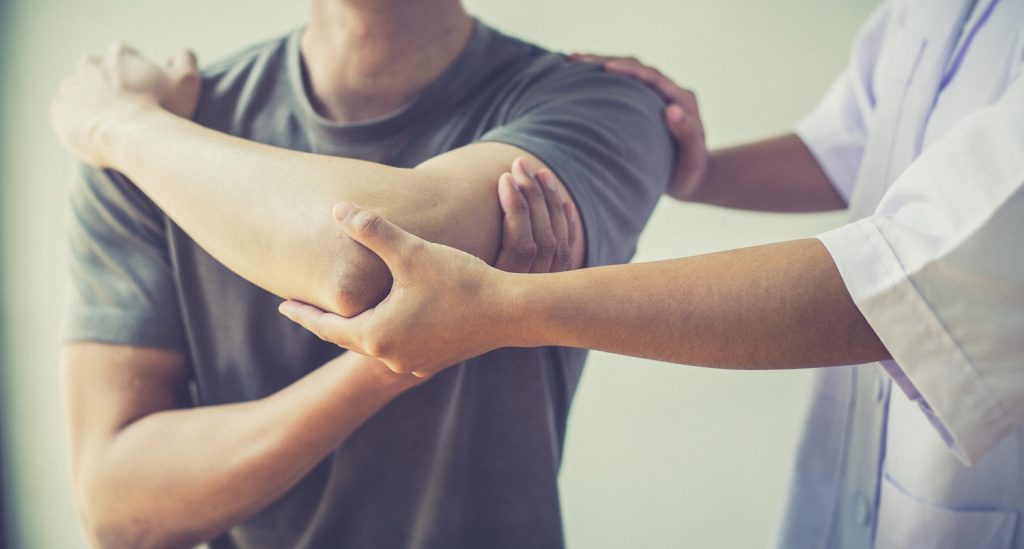
MANUAL THERAPY
Manual therapy refers to the hands-on techniques performed by healthcare professionals to evaluate, diagnose, and treat musculoskeletal conditions, aiming to alleviate pain, improve mobility, and enhance physical function.
- The therapist may use their hands, knuckles, or specialized tools to apply pressure and manipulation to the fascial tissues. The pressure is typically sustained for a period of time, allowing the fascia to gradually soften and release.
- Myofascial release can help alleviate pain, improve range of motion, and enhance overall function. It is commonly used to treat conditions such as muscle imbalances, chronic pain, repetitive strain injuries, and postural issues.
- Restrictions and tightness within the body's fascia, a connective tissue that surrounds muscles, bones, and organs.
- During MET, the therapist guides the patient through a series of specific movements and muscle contractions. These contractions are held for a short period, followed by a release and a gentle stretch of the targeted muscle group. The purpose is to improve joint alignment, increase range of motion, and promote relaxation and lengthening of the muscles.
- MET can be used to treat a variety of conditions, such as muscle strains, joint dysfunctions, postural imbalances, and muscular asymmetries. It can help correct muscle imbalances, alleviate pain, and improve joint stability.
Similar to spinal manipulation, Joint mobilization involves gentle, low-velocity movements of the joints to improve range of motion, reduce stiffness, and alleviate pain.
Hands to assess and manipulate the body's structure, including muscles, joints, and tissues, to promote healing, relieve pain, and improve overall function.
The goal of OMM is to restore balance and harmony within the body by addressing structural imbalances or dysfunctions. OMM techniques can include gentle stretching, soft tissue manipulation, joint mobilization, and manipulation of the spine or other body regions. These techniques are applied with precision and skill to target specific areas of concern and promote optimal functioning of the musculoskeletal system. OMM is used to treat a wide range of conditions, including back and neck pain, joint problems, headaches, sports injuries, and many other musculoskeletal issues.
Strain Counterstrain is a manual therapy technique used in physical therapy to alleviate pain and restore function by positioning the body in a position of minimal strain to target tender points and relax muscles.
Our licensed physical therapists not only help with managing pain, but also finding its source. Our therapists identify points of weakness or stiffness that may be adding stress to the painful area. Then, they will create a customized rehabilitation plan tailored to your injury and lifestyle needs.
Custom Orthotic Construction (Foot Levelers) are custom-built to support your feet. They help balance and support the spine, which can help relieve pain and improve your body’s overall biomechanics.
Functional training focuses on restoring strength and proper function of the musculoskeletal system with the goal of making it easier for patients to perform their everyday activities.
Taping is a technique used for the prevention, treatment, and rehabilitation of a wide variety of injuries and conditions. It is used to restrict the movement of injured joints, soft tissue compression to reduce swelling, supporting unstable joints, as well as for injury and re-injury prevention and rehabilitation.
Splinting is a rigid support made from metal, plaster, or plastic. It's used to protect, support, or immobilize an injured or inflamed part of the body.
The goal of Neuro-Muscular Re-education is to enhance motor control, prevent compensatory movements, and optimize functional performance. The individual is guided through a series of exercises and movements designed to improve muscle control, stability, and coordination. These exercises may involve resistance training, balance exercises, functional movements, and motor control drills
Kinesiotape is a flexible but rigid tape that acts to dynamically assist muscle function. As the tape is stretched and applied to the skin, it bunches the top layer of skin and lifts it away from the muscle. This creates a small gap between skin and muscle, facilitating improved smooth muscle movement, increased blood flow and lymphatic drainage, and reducing pain experienced.
Receive an exercise program specific to your diagnosis so you can work on your injury and lear how to manage and treat yourself.
Physical therapy plays a crucial role in managing these conditions, aiming to alleviate pain, improve function, and enhance the overall quality of life for individuals with cervical spine injuries,
